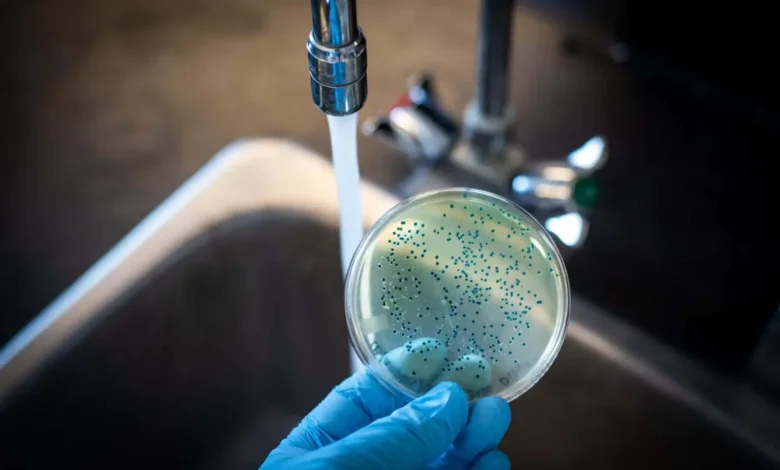Why Your Equipment May Be Suffering From Invisible Contaminants

When equipment fails, the cause is often hidden. Invisible contaminants—microscopic particles, vapors, and residues—silently infiltrate machinery, degrading performance and causing costly breakdowns. This guide examines common sources, preventive strategies, and advanced solutions to safeguard your equipment and ensure its long-term reliability.
What Are Invisible Contaminants and How Do They Impact Your Equipment?
Invisible contaminants encompass a broad spectrum of harmful substances that cannot be detected solely through visual inspection. These include airborne particles smaller than 10 micrometers, chemical vapors, moisture at molecular levels, and electromagnetic interference that can disrupt sensitive electronic components.
The impact of these contaminants varies depending on equipment type and operating environment. In precision machinery, microscopic particles can cause premature bearing failure and seal degradation. Electronic systems suffer from corrosion when exposed to ionic contaminants, while chemical vapors can break down lubricants and protective coatings over time.
What makes invisible contaminants particularly dangerous is their cumulative effect. Unlike catastrophic failures caused by obvious problems, contamination damage builds slowly, often going unnoticed until significant harm has occurred. This gradual deterioration leads to reduced efficiency, increased energy consumption, and shortened equipment lifespan.
Research shows that contamination is responsible for up to 70% of hydraulic system failures and contributes significantly to premature motor bearing failures. The financial impact extends beyond repair costs to include unplanned downtime, lost productivity, and emergency replacement expenses.
See also: Expert Estate Management London: Property Standards with Service
Identifying Common Sources of Invisible Contaminants
Understanding where invisible contaminants originate is crucial for developing effective prevention strategies. These sources can be broadly categorized into environmental, operational, and system-generated contaminants.
Environmental Contaminants
The surrounding environment constantly introduces invisible threats to equipment. Airborne particles from industrial processes, vehicle emissions, and natural sources like pollen and dust create a continuous contamination challenge. Even seemingly clean indoor environments harbor microscopic particles that can infiltrate sensitive equipment.
Atmospheric moisture presents another significant threat, particularly in regions with high humidity or temperature fluctuations. Water vapor can condense within equipment, leading to corrosion, electrical shorts, and lubricant degradation. Chemical vapors from nearby industrial processes, cleaning products, or building materials can also migrate into equipment housings.
Salt spray in coastal environments poses unique challenges, as sodium chloride particles accelerate corrosion even in minimal concentrations. Similarly, industrial areas with sulfur compounds or acidic emissions create corrosive environments that gradually degrade equipment components.
Operational Contaminants
Daily operations generate their invisible contamination sources. Personnel movement introduces skin cells, clothing fibers, and external particles into work areas. Maintenance activities can inadvertently introduce contaminants through tools, replacement parts, or improper handling procedures.
Process-related contamination occurs when equipment generates particles through normal operation. Metal wear particles from moving components, polymer degradation products from seals and gaskets, and combustion byproducts all contribute to internal contamination that affects performance over time.
Temperature cycling during startup and shutdown creates condensation opportunities, while vibration can dislodge previously settled particles, redistributing them throughout the system. Even routine activities like opening access panels can introduce contamination if proper protocols aren’t followed.
System-Generated Contaminants
Equipment itself becomes a contamination source as components age and wear. Bearing degradation produces metallic particles that circulate through lubrication systems. Seal wear generates polymer fragments that can block filters and contaminate fluids.
Electrical systems produce ionic contaminants through arcing and corona discharge, while heating elements can generate chemical byproducts that affect nearby components. Fluid systems create contamination through cavitation, which produces microscopic bubbles that collapse and generate particles.
Internal corrosion from trapped moisture or chemical reactions creates oxidation products that circulate throughout systems. These internally generated contaminants often prove more damaging than external sources because they originate within protective enclosures where they become concentrated.
Preventative Measures: Cleaning Protocols and Maintenance
Effective contamination control requires systematic approaches that address both prevention and removal. Establishing comprehensive cleaning protocols forms the foundation of any contamination management strategy.
Developing Effective Cleaning Protocols
Start by categorizing equipment based on contamination sensitivity and operational criticality. Precision instruments and electronic systems require more stringent protocols than general mechanical equipment. Create specific procedures for each category, detailing cleaning frequency, approved methods, and acceptable contamination levels.
Document all cleaning activities to track effectiveness and identify trends. Regular monitoring helps determine if protocols need adjustment based on environmental changes or operational modifications. Include contamination testing as part of routine maintenance schedules to catch problems before they impact performance.
Training personnel in proper cleaning techniques is essential for protocol success. Many contamination problems stem from well-intentioned but improper cleaning methods that introduce more contaminants than they remove. Provide hands-on training with approved cleaning materials and techniques specific to each equipment type.
Implementing Maintenance Best Practices
Preventive maintenance programs should incorporate contamination control at every step. Use clean, filtered air for pneumatic systems and ensure all replacement fluids meet cleanliness specifications. Store spare parts in clean, controlled environments to prevent contamination before installation.
Establish clean zones around critical equipment during maintenance activities. Use protective covers, clean tools, and contamination-resistant containers to minimize exposure during service intervals. Implement lockout/tagout procedures that include contamination protection measures.
Regular filter replacement schedules should be based on actual contamination levels rather than arbitrary time intervals. Monitor filter pressure drops and contamination bypass to optimize replacement timing. Consider upgrading to higher-efficiency filtration systems if contamination levels consistently exceed acceptable limits.
Environmental Controls
Control the immediate equipment environment through proper ventilation, humidity management, and air filtration. Install high-efficiency particulate air (HEPA) filters in critical areas and maintain positive pressure to prevent contamination infiltration.
Monitor environmental conditions continuously to identify trends that might indicate increasing contamination risks. Temperature and humidity fluctuations often signal potential condensation problems, while particle counters can detect increasing airborne contamination before it affects equipment.
Seal equipment enclosures properly and inspect sealing systems regularly. Damaged gaskets, loose covers, and inadequate sealing allow contamination entry that defeats other protective measures. Use appropriate sealant materials that won’t degrade and become contamination sources themselves.
Advanced Solutions: Filtration and Monitoring Systems
As contamination challenges become more complex, advanced technological solutions provide enhanced protection and early warning capabilities. These systems offer proactive contamination management that goes beyond traditional maintenance approaches.
High-Performance Filtration Systems
Modern filtration technology can remove contaminants at the molecular level, providing protection far beyond conventional filters. Multi-stage filtration systems combine different technologies to address various contamination types simultaneously. Electrostatic filters capture charged particles, while activated carbon removes chemical vapors and odors.
Magnetic filtration systems excel at removing ferrous particles from lubrication systems, extending fluid life and protecting downstream components. These systems work continuously without pressure drop penalties, making them ideal for critical applications where uninterrupted operation is essential.
Consider upgrading compressed air systems to oil-less air compressor technology, which eliminates oil contamination at the source. These systems provide clean, dry air without the risk of oil carryover that can contaminate sensitive processes and equipment downstream.
Real-Time Monitoring Systems
Advanced monitoring systems provide continuous contamination assessment, enabling immediate response to changing conditions. Particle counters installed in fluid systems track contamination trends and trigger maintenance actions when levels exceed predetermined thresholds.
Moisture sensors detect humidity changes that could lead to condensation problems, while chemical sensors identify specific contaminants that might indicate equipment degradation or environmental changes. These systems provide early warning that allows preventive action before damage occurs.
Integrate monitoring data with maintenance management systems to automatically schedule cleaning and maintenance activities based on actual contamination levels rather than calendar intervals. This data-driven approach optimizes maintenance timing and reduces both contamination exposure and maintenance costs.
Automated Cleaning Systems
Automated cleaning systems maintain contamination control without human intervention, ensuring consistent results and reducing labor costs. Self-cleaning filters automatically remove accumulated particles without system shutdown, maintaining continuous protection.
Automated lubrication systems deliver clean lubricants while removing contaminated fluids, extending equipment life, and maintaining performance. These systems can be programmed to operate during low-demand periods, minimizing operational disruption.
Ultrasonic cleaning systems provide deep cleaning of components during maintenance, removing contamination that traditional methods might miss. These systems are particularly effective for precision components where complete contamination removal is critical.
Conclusion
Start with a contamination assessment of your critical equipment. Identify sources, evaluate current measures, and create improvement plans based on risk and ROI. Effective contamination control is an ongoing process requiring continuous attention and adaptation. Investing in proactive management leads to longer equipment life, improved reliability, and reduced costs.





